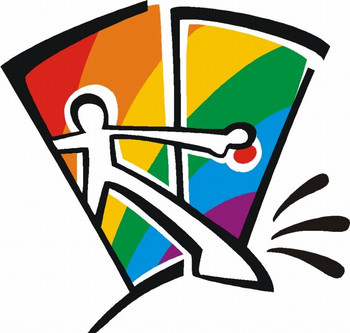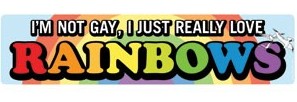 Last Tuesday (12th October 2010) was “National Coming out Day” in the UK. To quote Wikipedia, this is “an internationally observed civil awareness day for coming out and discussion about gay, lesbian, bisexual, asexual and transgender (LGBT) issues”. It seems appropriate then, for this week’s blog post to be about working with gay, lesbian, bisexual and transgender clients.
Last Tuesday (12th October 2010) was “National Coming out Day” in the UK. To quote Wikipedia, this is “an internationally observed civil awareness day for coming out and discussion about gay, lesbian, bisexual, asexual and transgender (LGBT) issues”. It seems appropriate then, for this week’s blog post to be about working with gay, lesbian, bisexual and transgender clients.
I’ll start off by stating that I am a gay affirmative therapist. I don’t give two hoots whether you are gay, lesbian, straight, bisexual or transgender. We are all OK and there are no goods or bads, rights or wrongs, there’s just us.
I believe that human sexuality is a continuum, it’s a grey scale and we are all somewhere on it. This belief is backed up by research by Kinsey (1953) and Klein (1985). Klein went further and suggested that there is fluidity to our sexuality throughout time. There is no doubt in my mind that our sexuality plays an important part of defining who we are and this is an issue that we all must examine regardless of our sexual orientation.
Issues that need accounting for with gay, lesbian, bisexual and transgender clients.
Societal oppression – It wasn’t too many years ago that homosexuality was illegal in this country. In the USA, LGBT couples still have few rights in some states.
Homophobia – Within society this can take many forms from violence and victimization to subtle discrimination in the workplace. Some LGBT people lose contact with family and friends as a result of coming out. Others dare not come out for fear of losing those around them that they love or of persecution from others who would not accept their sexuality.
Heterosexism – the belief that opposite sex relationships are superior to same sex relationships. This sometimes has a major impact on same sex couples both from the perception of the validity of their relationship from society, but also the acknowledgment of their relationship from their family and friends.
Internalised Homophobia – The feelings that some LGBT individuals have that they are “defective” which can result in self-hatred, guilt and lack of belief that they could ever have a successful same sex relationship. We can work through these issues in therapy and it can sometimes be a slow and painful process that leads to self-acceptance and pride in who they are.
Issues only same-sex couples have to deal with:
Homophobia and heterosexism in the community – this can create fear about committing to a same sex long term relationship for some lesbian and gay people.
Lack of “role models” for how to have a same sex relationship – this can lead to confusion over boundaries, expectations and obligations within the relationship.
Generally lower levels of family support – When things get tough some LGBT couples find it difficult to get help, advice and support from their family.
The same-sex nature of the relationship increases the chances of certain problems if both partners conform to traditional gender roles – Lesbian couples can have problems with emotional fusion whilst gay men may find they are emotionally disengaged from each other or in competition.
Bisexual clients may have to deal with another set of issues all together, including the confusing state of being “too queer” for heterosexual society and “not queer enough” for the homosexual one.
I’m not for a minute suggesting that these issues would be the focus of the work I do with a lesbian, gay, bisexual or transgender client. We all bring our own stuff to therapy regardless of our sexuality. What I’m saying is that these issues need to be kept in mind and tackled when they come up. I don’t need to be gay to do that, just as I don’t need to be black in order to empathise with the pain of being racially discriminated against.
Ultimately for me, I like working with people. I get a buzz out of helping people change, grow and realise their potential. Whether you are straight or gay, black, blue or green, I’m there for you if you need the support.
References
Kinsey, A.C., Pomeroy, W.B., & martin, C.E (1948). Sexual behaviour in the human male. Philadelphia: W.B. Saunders Company.
Klein, F., Sepekoff, B, & Wolf, T.J (1985). Sexual orientation: A multi-variable dynamic process. Journal of Homosexuality, 11 (1/2), 35-50.
If you need more help, advice or support on lesbian, gay, bisexual or transgender issues I can recommend the Lesbian and Gay Foundation, which is based in Manchester.

 As a therapist I spend a great deal of my time talking to clients about their emotions. For some clients this is no problem, they live in an emotional world. For others I can ask what they are feeling and I see a look of confusion descend. Some of us are good with emotions; some of us are good at hiding them. We all have them.
As a therapist I spend a great deal of my time talking to clients about their emotions. For some clients this is no problem, they live in an emotional world. For others I can ask what they are feeling and I see a look of confusion descend. Some of us are good with emotions; some of us are good at hiding them. We all have them.
